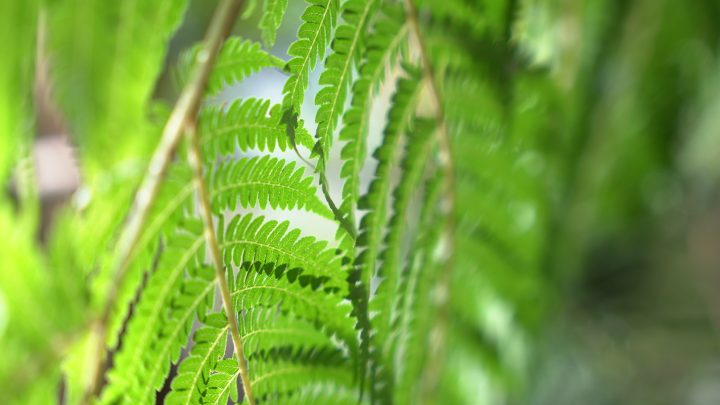A short introduction to ferns / Saniaiset (tour in english)
Saniaiset ovat olleet maapallollamme pitkään jo ennen kukkivia kasveja ja dinosauruksia. Tule tutustumaan kasvihuoneista löytyviin saniaisiin David Stokesin johdolla. Kierros on englanniksi.
Ferns have been a major feature of our planet’s plant life for even longer than flowering plants, bulbs, and conifers. Did you know they originated about 360 million years ago in the late Devonian epoch, predating all the dinosaurs!
Since then, ferns, because they are incredibly resilient, have survived the several mass extinction events that have occurred, to evolve into the myriad forms found across the world today. Ferns are the second most diverse group of plants, after orchids, with approximately 10,500 named species and up to a possible 12000 living across every continent except Antarctica.
Ferns can be found growing in our local forests, as well as temperate parts of the world, and steamy tropical jungles, burning deserts, up trees and mountains, floating on freshwater lakes and climbing through bushes, or even gracing our living rooms.
Did you know that no one knew how ferns reproduced until just over a hundred years ago? Or that ferns shoots are eaten as a delicacy in Japan? Or the Māori use cooked fern tubers as food, as our own ancestors did to survive in Europe 30,000 years ago.
Even traditional Finns chewed liquorish flavored fern rhizomes in the past!
So, perhaps it’s time to learn a bit more about these incredible plants that form a significant part of our world’s flora and how they help to tell the story of life on Earth.
Welcome to the tour with David Stokes
- David will lead you through the many kinds of ferns and fern allies on display through the different biomes found within the greenhouses.
- He will explain the different ways ferns can reproduce, grow and can survive.
- He will tell you about the amazing fern craze, or pteridomania that gripped Britain in the 1800’s, where young ladies and gentlemen went on weekend fern hunts to decorate their homes and gardens with ferns.
- As well as explain different ways you can grow ferns in Finland.
- Also, he will describe how ferns help to tell the story of plant evolution. Why ferns are important to ecology and how they help to maintain the soils, humidity, and integrity of our world’s forests.
Introducing the guide David Stokes
David has been involved professionally with plants for nearly fifty years. He started his career as a student at the world famous Royal Horticultural Society’s Garden at Wisley, Surrey, not far from London, UK, where he learnt about the world’s flora and how to grow it.
Since then, he has worked as a head gardener in one of the most beautiful public gardens of south-west England, before moving on to the Royal Botanic Gardens at Kew in London.
Here he developed a wide knowledge of ferns in charge of the fern nursery, as well as assisting in the ornamental fern collections. Here he met and was inspired by the former director of Singapore Botanical Gardens, Professor Holtham to travel. So, he set off to the Canary Islands collecting rare ferns and succulents for Kew Gardens.
Later he became a university lecturer in England, teaching BSc Horticulture and Horticulture as Therapy.
In 2009 he moved to Finland to take up teaching posts at Livia College in Piikkiö, as well as AMK. teaching horticulture and English, as well as occasional teaching for Aalto and Helsinki universities on horticulture and landscape.
He was instrumental in the restoration of the Runeberg home museum garden in Porvoo.
As well as contributing to several books on garden history and writing magazine articles on plants and biodiversity he has maintained a collection of ferns wherever he has lived. His home and garden are filled with all kinds of ferns still!
—
Please reserve a spot on tour below.

